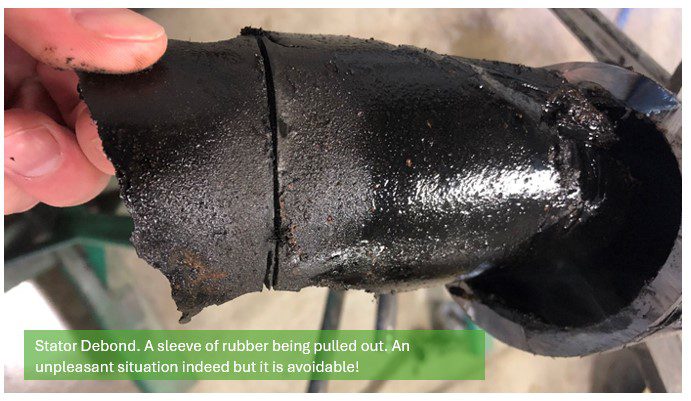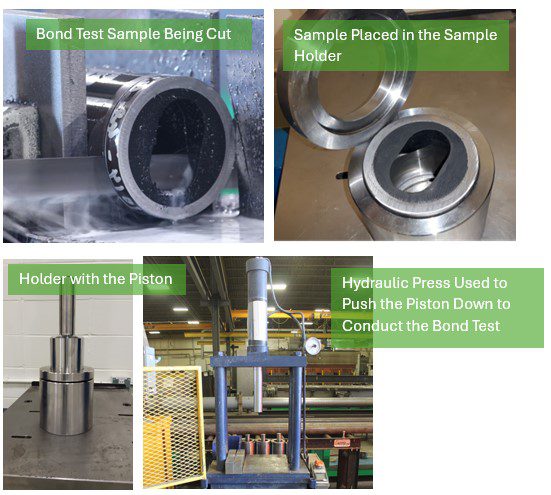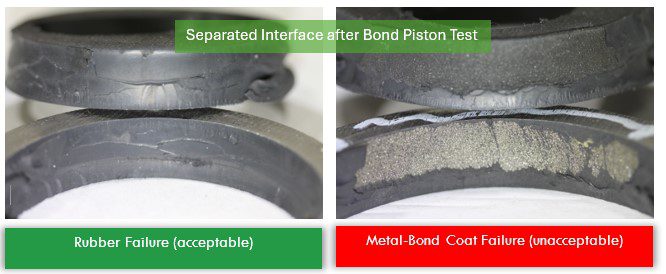
a key step to prevent pC Pump Bond Failures and how iso 15136-1 can help
by Sriram Lakshminarayanan, p. ENG., SEnior Materials engineer

A main source of frustration among PC pump users is the premature failure caused by stator debonding. With my extensive experience in this domain, my view is that debonding is largely a preventable problem. Debonding can occur due to different reasons, although often it is due to inherent weakness in the bonding layer, either from design/materials itself or inconsistent manufacturing. This is especially the case for premature failures – often where users witness the unpleasant scene of a sleeve of rubber coming loose from the metal tube. But there is help!
ISO 15136-1 standard offers a detailed framework for PC pump users to assist them in their product selection process. Unfortunately, its use has been very limited, and my reasoning is because it is perhaps too detailed and voluminous! However, my view is that users stand to gain from utilizing specific aspects of the standard, that are relevant to their common PC pump challenges. This may benefit users by allowing them to ask the right questions of suppliers, or including certain requirements on their tender documents using the standard’s wording.
So, now, coming back to stator bonding and how ISO 15136-1 addresses it, here are the main areas:
- Section 7.9.3 under “7.9 Examination and inspection” prescribes the common piston testing method that manufacturers can utilize to perform bond testing on each manufactured stator.
- Table 1 under “7.4 Quality” prescribes a frequency at which the piston testing is to be performed to satisfy different quality levels (Q1 100%, Q2 20%).
- Annex A calls for an elastomer datasheet to meet validation grade levels V1 and V2 requiring manufacturers to publish the piston testing results for each of their elastomers, unaged and after fluid aging.
In my opinion, there is much to be gained by end users to receive products of good bond quality simply by requiring their manufacturers to perform bond piston test (point #1 above) on each stator manufactured (at Q1 level). The piston test requires:
- cutting thin samples (3/8” or 5/8” thick) from end of stators
- subjecting the samples to the piston test (a.k.a push-out test), where a die of specified clearance with tube ID is pushed against the rubber to separate it from the tube
- quantifying the separated area for failure mode and
- approving the stator if it meets a R-100 criteria.
All these steps are covered on the Annex A.4.5.3 of the standard. The pictures I am sharing below help illustrate further:


A R-100 result, required by ISO 15136-1, implies 100% of the separated interface has rubber failure/tear, an indication of good bond quality.
By adding one well-defined requirement regarding bond piston test from the ISO 15136-1 standard to a tender specification (or purchase order), end users stand to drastically reduce the chance of the major headache that is stator debonding and reduce expensive workovers.
A few more thoughts for the more curious minds. What the piston test verifies is the quality of bonding in an unaged manner at stator ends. It doesn’t inform anything about the retention of bond strength upon exposure to temperature and fluids, which is inevitable with downhole PC pumps. However, this is a crucial aspect from a pump durability and longevity perspective. This is normally addressed by subjecting the bond test samples to temperature/fluid aging and then to the same piston test. The point #3 I referred above takes care of it as it requires end users to publish the results of piston test after aging. Still, it doesn’t stop here!
To ensure durability of bonding in a downhole environment, a manufacturer must start from the development/qualification of bonding agents and elastomers, lab and full-scale evaluation under representative and aggressive conditions, establishing proper manufacturing process parameters and a strong quality program, and go all the way till assessing bond retention on field-returned stators – so as to complete the full loop. If you would like insights into how we, at Lifting Solutions, deal with all these topics, you may download our technical bulletin, PCP Stator Bonding Overview.
Download the tech bulletin
Download our PCP Stator Bonding Overview Technical Bulletin in a convenient PDF format: